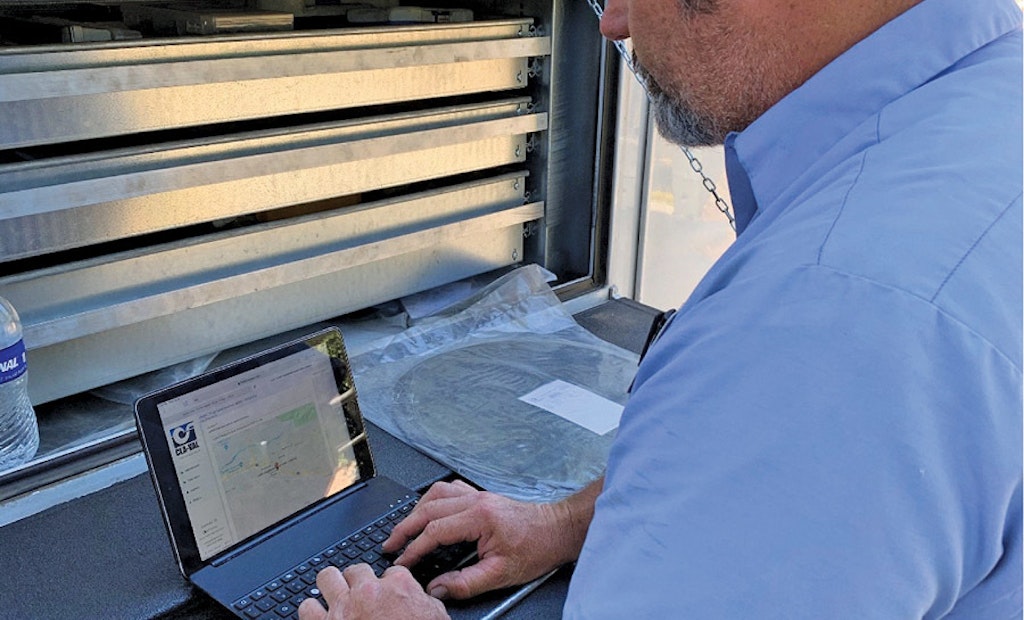Interested in Infrastructure?
Get Infrastructure articles, news and videos right in your inbox! Sign up now.
Infrastructure + Get AlertsAsset management software helps keep track of control valve information
Problem:
The city of Redlands, California, has two water supplies that feed into seven pressure zones. Tim Neumann, a water plant mechanic, studied 18 automatic control valves and produced a maintenance database, recording everything relating to the valves. Using his own spreadsheet program, he spent hours inputting records and pictures of the valves. He soon was responsible for 92 control valves, but his program was not an efficient way to log valve data.
Solution:
Cla-Val was just launching its Link2Valves asset management software for control valves. It enables operators to log data and photographs using a mobile phone app; the data is uploaded to a database via the app or a dedicated website portal.
Result:
Neumann can record all the valve settings, log the maintenance, take pictures, include the geolocations of the valve, and know when a valve is due for maintenance. The system graphically lets him know by changing the map icon color and sends him email reminders. 800-942-6326; www.cla-val.com.
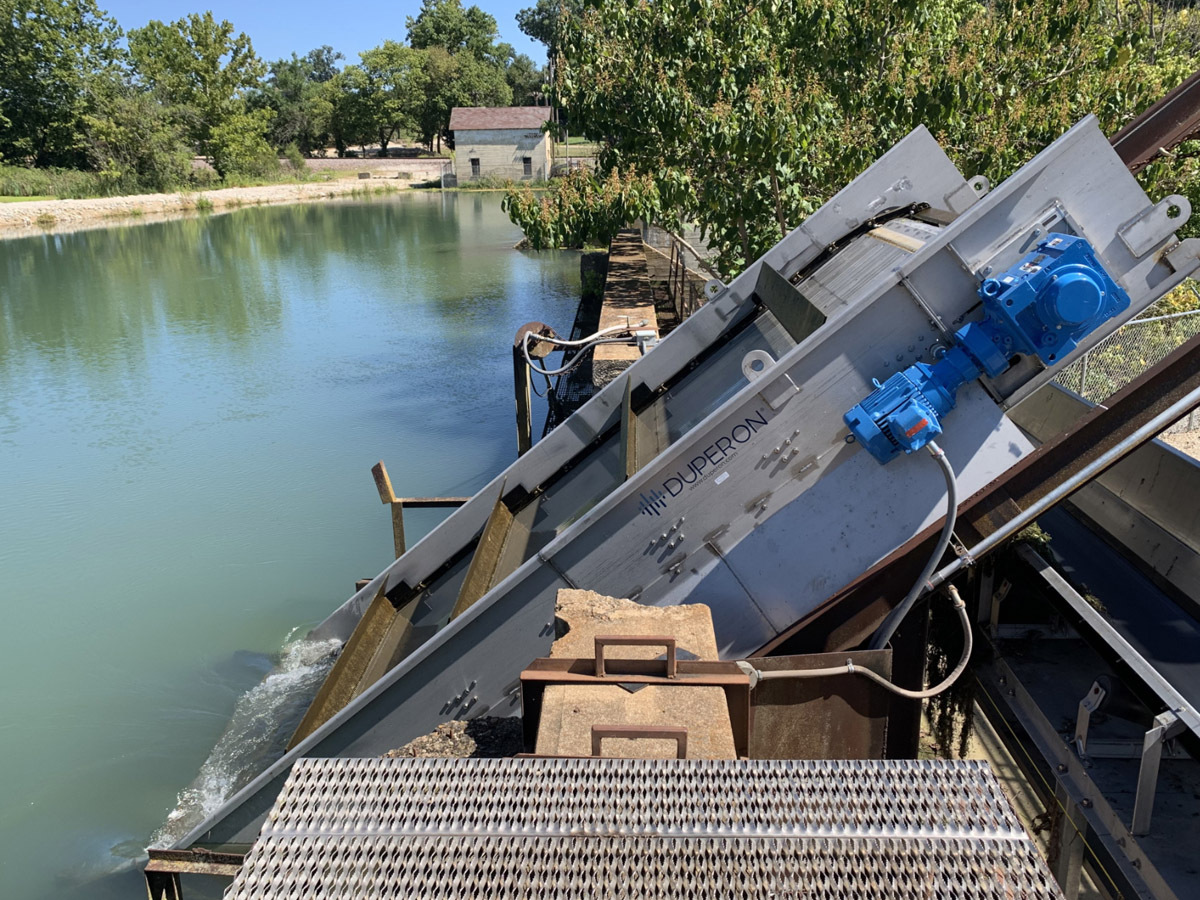
Pump station eliminates clogged pumps due to flushable wipes
Problem:
The Drake Pump Station, located in Saginaw, Michigan, experienced chronic pump maintenance due to flushable wipes. Although the dry pit pump station represented only 0.1 mgd of flow in the city’s collections network, it required a substantial amount of servicing — up to three times a week. This consisted of two operators spending four hours manually removing rags in a confined space entry to clean out the clogged pump. It was a dirty and time-consuming task.
Solution:
In partnership with the city, Duperon adapted a proven screening system for a novel application. Deployed inside a 19-inch manhole, the system uses three existing technologies to screen, compact and transport collected debris 26 feet vertically without auger-assisted conveyance. By removing nondissolvable solids at the point they enter the collections system, the screening system restores integrity and resiliency of the collections system.
Result:
For the duration of the testing period, the city had zero instances of clogged pumps, resulting in a potential labor and maintenance savings of over $41,000 annually. 800-383-8479; www.duperon.com.
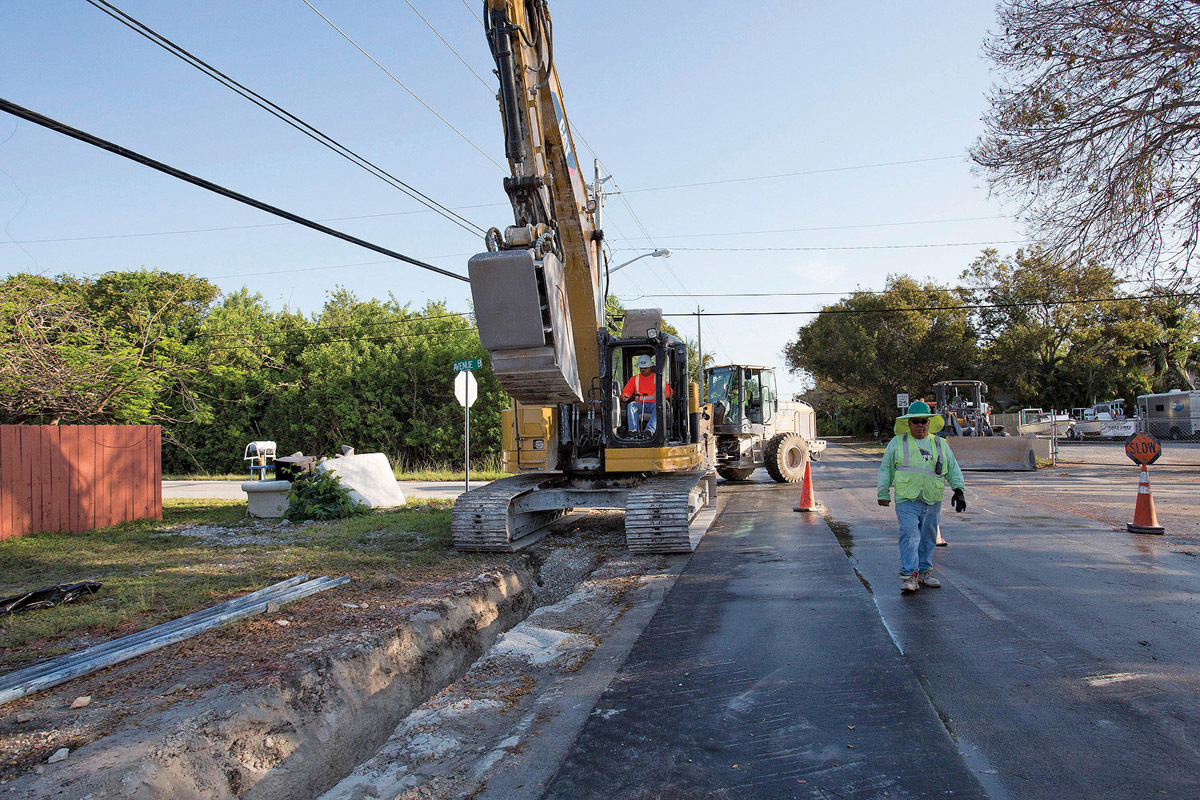
Pressure sewer system a fit for septic-to-sewer conversion
Problem:
Bloomingdale, Georgia, relied on septic tanks until 1984. When tests were performed, the city discovered that the septic tanks did not perc properly because of the soil conditions: The soil is described as “gumbo,” a hard clay dirt that sticks when wet and is hard as rock when dry. A moratorium on building permits was issued until a central sewer system was installed.
Solution:
Both pressure sewer and gravity sewer were considered. Pressure sewer, powered by Environment One grinder pumps, was chosen for several reasons, including shallow burial depth for the sewer mains: Because frost is not a concern in Bloomingdale, mains are located approximately 3 feet below the surface (pressure sewer mains are buried just below the frost line, which varies by location). Mains could be installed using a trencher, eliminating the need for trench boxes. Because the system is sealed, infiltration is not an issue for pressure sewer systems that are installed properly. Gravity sewer mains commonly require depths of 15 to 20 feet regardless of frost depth.
Result:
More than 1,000 grinder pumps are installed in Bloomingdale today; two technicians maintain the system. No preventive maintenance is needed, so grinder pump stations are not visited unless a homeowner calls for service. The city has pumps that were installed in 1984 that are still in service; they are replaced with Extreme Series grinder pumps as their service life ends. 518-346-6161; www.eone.com.
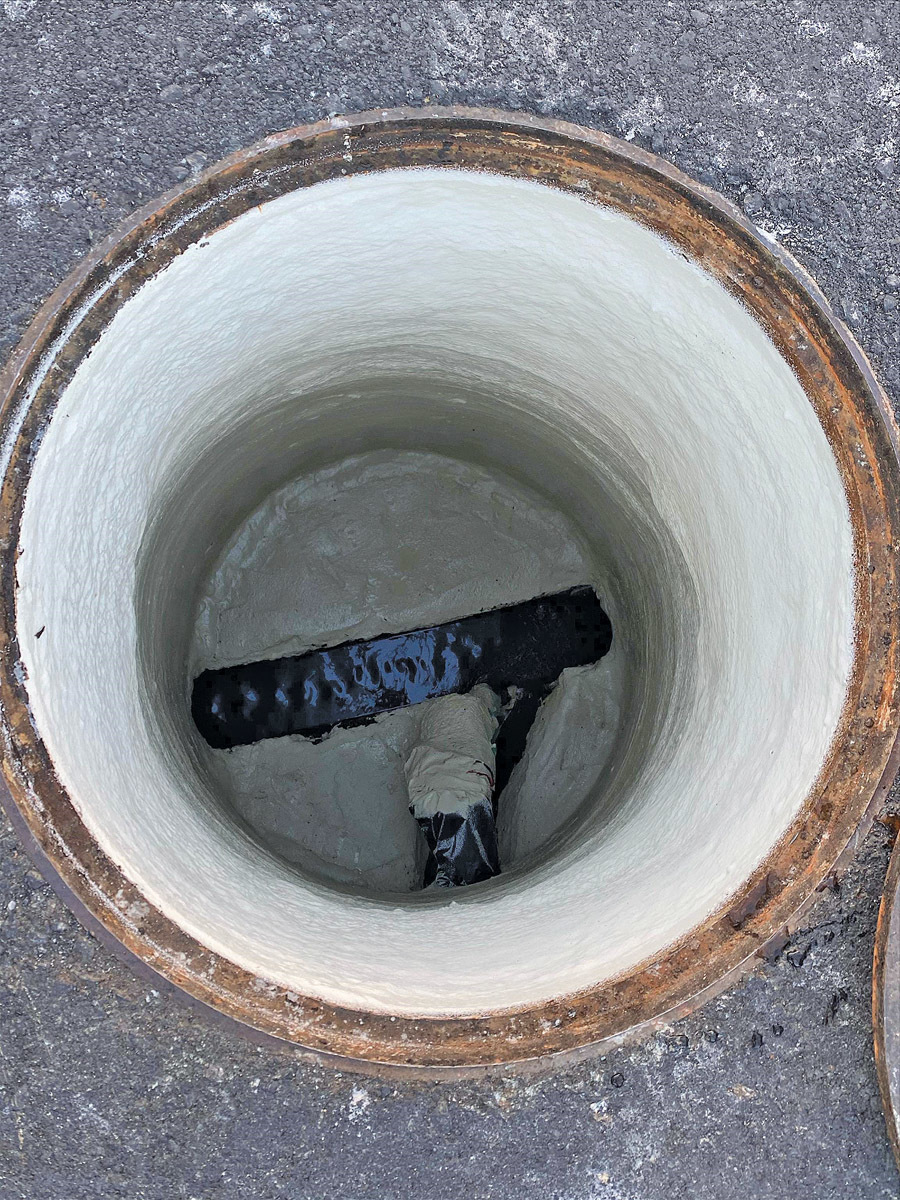
Process successful in rehabilitating deteriorated manholes
Problem:
Hydrogen sulfide is a corrosive compound which, over time, and combined with heavy inflow and infiltration, deteriorates manholes. That was the case for several Richmond, California, manholes.
Solution:
Before the epoxy liner could be installed, extensive surface preparation and repairs were needed. The entire surface of each wall was resurfaced using hydraulic cement. In manholes where bricks were missing, they were replaced by filling in the areas with micro-silica cement. Furthermore, any severe leaks were injected with grout. At this point, H & R Underground was then ready to apply Epoxytec’s CPP Sprayliner. Using a Graco XP70 plural pump set at a ratio of 1-1, it sprayed CPP Sprayliner at 150 mils thick.
Result:
In total, seven manholes were rehabilitated over the period of one week. The expertise of H & R Underground, specifically its attention to detail in addressing each manhole’s individual needs, allowed for successful rehabilitation in a timely manner. 877-463-7699; www.epoxytec.com.
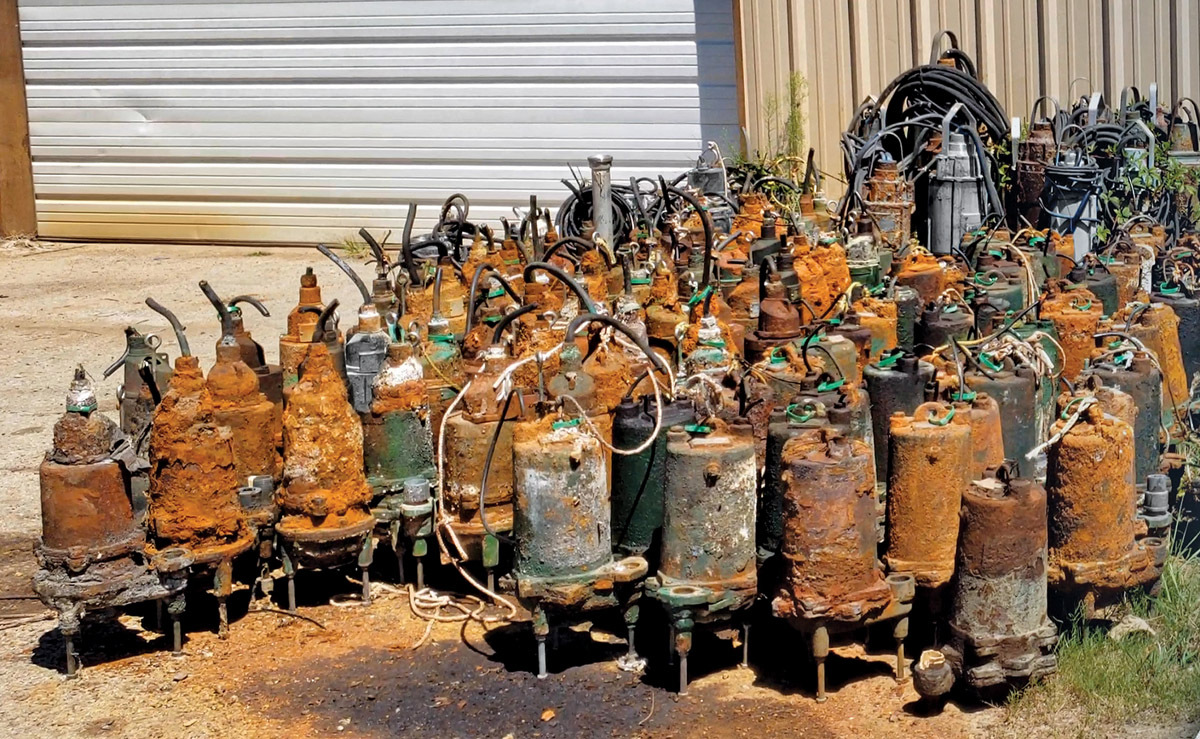
Grinder pumps solve community’s clogging issue
Problem:
At least once a month, residents of a 48-unit townhome complex in New Jersey saw a vacuum truck unclogging their sewer pump system and cleaning out the well. The complex used a four-pump system engineered for single-family homes, and it was underperforming with a pumping capacity of 11 gpm. Rags and solids accumulated in the basin, and frequent vacuum truck visits were needed to keep the system operational.
Solution:
The facility turned to Franklin Electric FPS IGP Series Grinder Pumps, designed as replacements for small-horsepower progressive-cavity and other centrifugal grinder systems. The 2 hp pumps have a maximum flow rate up to 33 gpm; the quadplex system was simplified to a triplex. These pumps allowed the owner to keep the existing basin and modify the controls. They were installed on a guiderail so that maintenance technicians can easily slide them out of the well, saving time and money.
Result:
Installed in 2018, the system has never clogged, eliminating the vacuum truck visits and the maintenance and emergency repair costs. 800-437-6897; www.franklin-electric.com.
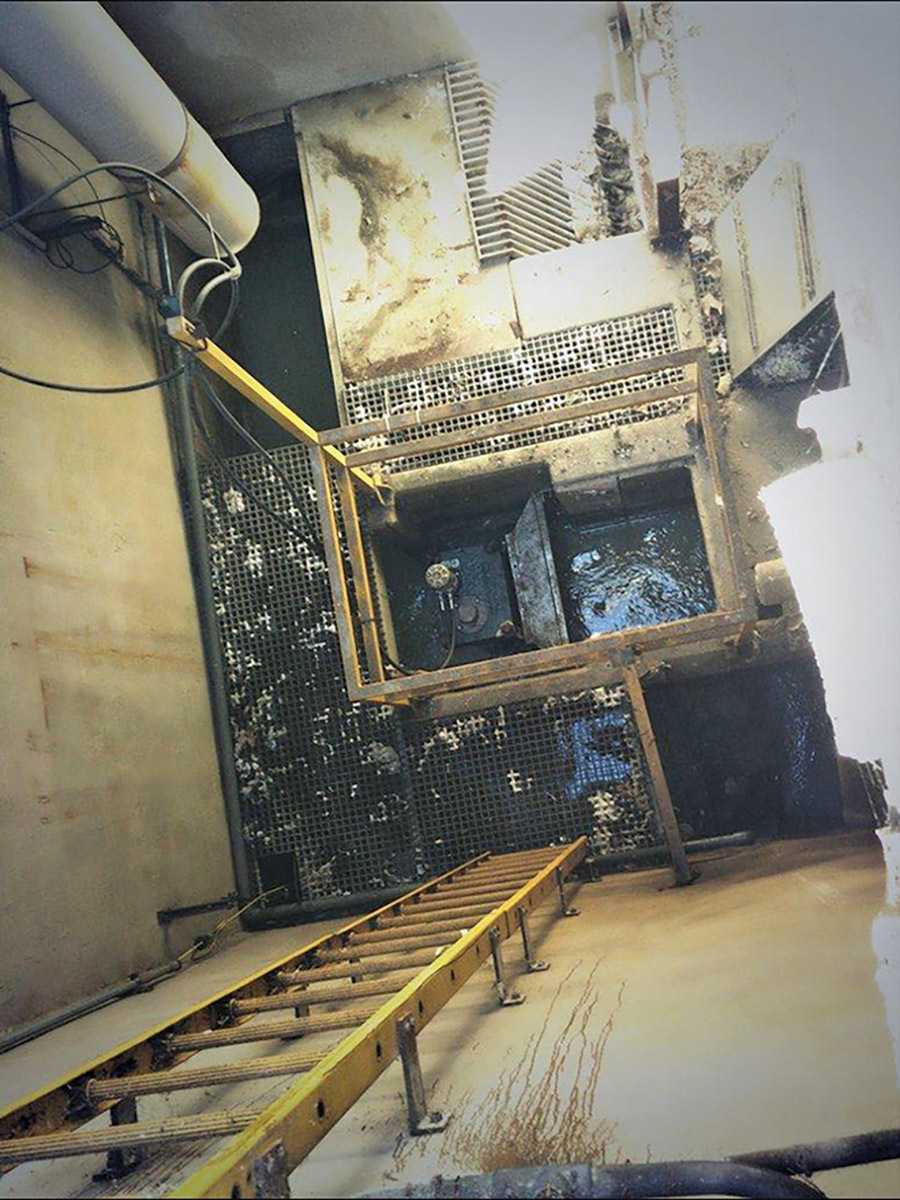
Upgrade cuts wipes problem and major costs from electrical bill
Problem:
In 2012, the pumps at Santa Margarita Water District in California began to lose efficiency as the wipes loading increased and the facility had to run all four pumps to maintain plant production. Upon reaching 60 Hz, plant staff had to shut down the plant to derag the pumps. The deragging process started to become necessary every two to six weeks, requiring two operators for about two hours each time to complete the task. And due to some aging isolation valves that leaked, the plant needed to be entirely shut down during deragging. These unplanned shutdowns were costing the district an acre-foot of reclaimed water production per month, and the labor costs added up to about $15,000 per year.
Solution:
The facility decided to upgrade its existing Channel Monster to a new Wipes Ready perforated drum configuration from JWC Environmental. The perforated drum on the newest generation of Channel Monsters better captures the wipes and rags that can pass through traditional coil drums. “This upgrade cost significantly less than purchasing a whole new set of pumps,” says Ron Johnson, facilities supervisor. “Plus, this is a solution that will completely eliminate the pump clogging problems we were having for the long term.”
Result:
Since the new drums were installed, the facility has had zero pump-clogging issues and has returned to using two pumps at a time instead of four. Pumping energy costs have decreased $78,000 per year, and manual pump deragging has been eliminated. 833-544-1335; www.jwce.com.
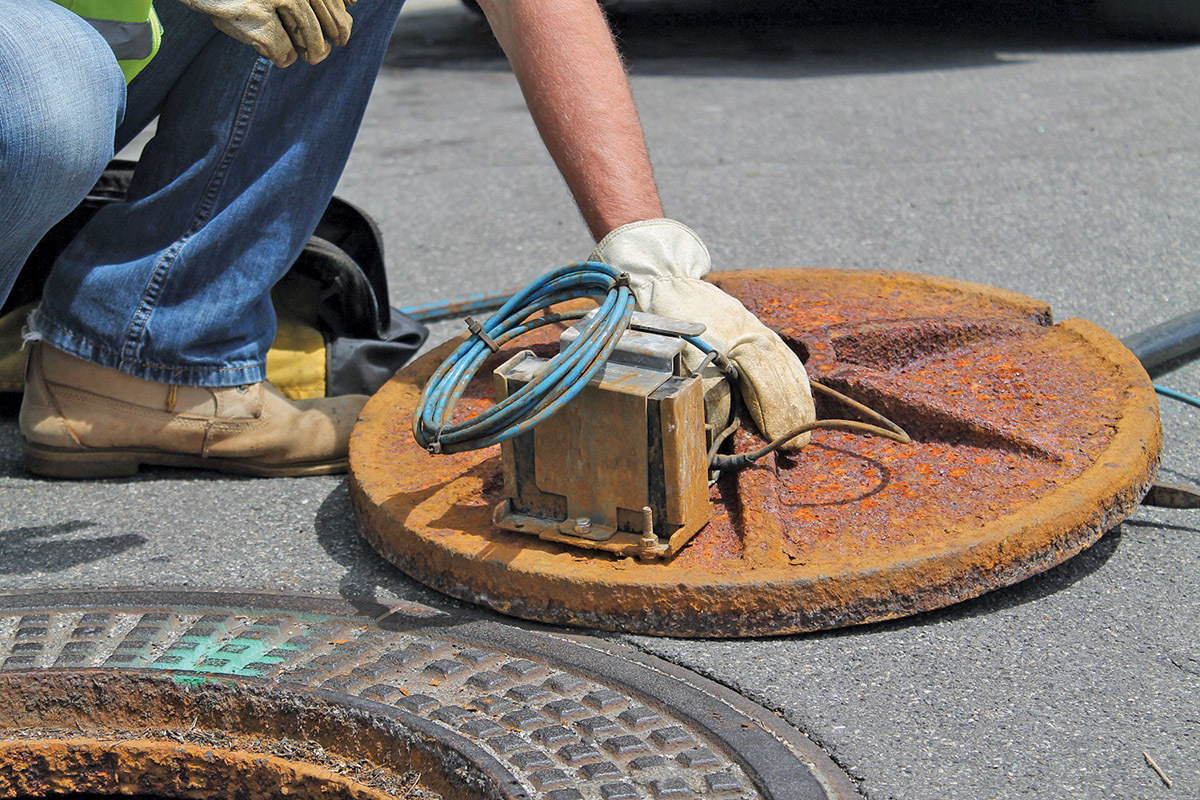
Satellite-communication network enables quick emergency response
Problem:
After a drunk driver collided with two power poles in El Segundo, California, over 4,000 residents experienced power outages. Not only were residents out of power, but seven sewer lift stations were off grid. A major sewer spill in the nearby Pacific Ocean would lead to an environmental disaster.
Solution:
SmartCover alerted El Segundo sewer operators with level measurements. These alarms allowed the city to prioritize which lift stations were critical for response. Generators and emergency pumps were then allocated to the most-needed stations. Shortly after power was temporarily restored, on-call employees were notified that another outage was detected. Other segments of the electrical distribution system were overloaded and left nonfunctional. Field crews had no access to the internet due to the power outage. Decisively, they used their smartphones to their advantage, accessing SmartCover’s website to track water levels at the stations. In response, three staff members shuttled generators from station to station. The online satellite-based monitoring system enabled the employees to see which stations were in need of immediate support.
Result:
The strategic decision to invest and implement SmartCover technology using a satellite-communication network enabled the city to effectively respond to an unexpected infrastructure emergency and successfully restore power to residents and back up its sewer lift stations. 760-291-1980; http://smartcoversystems.com.
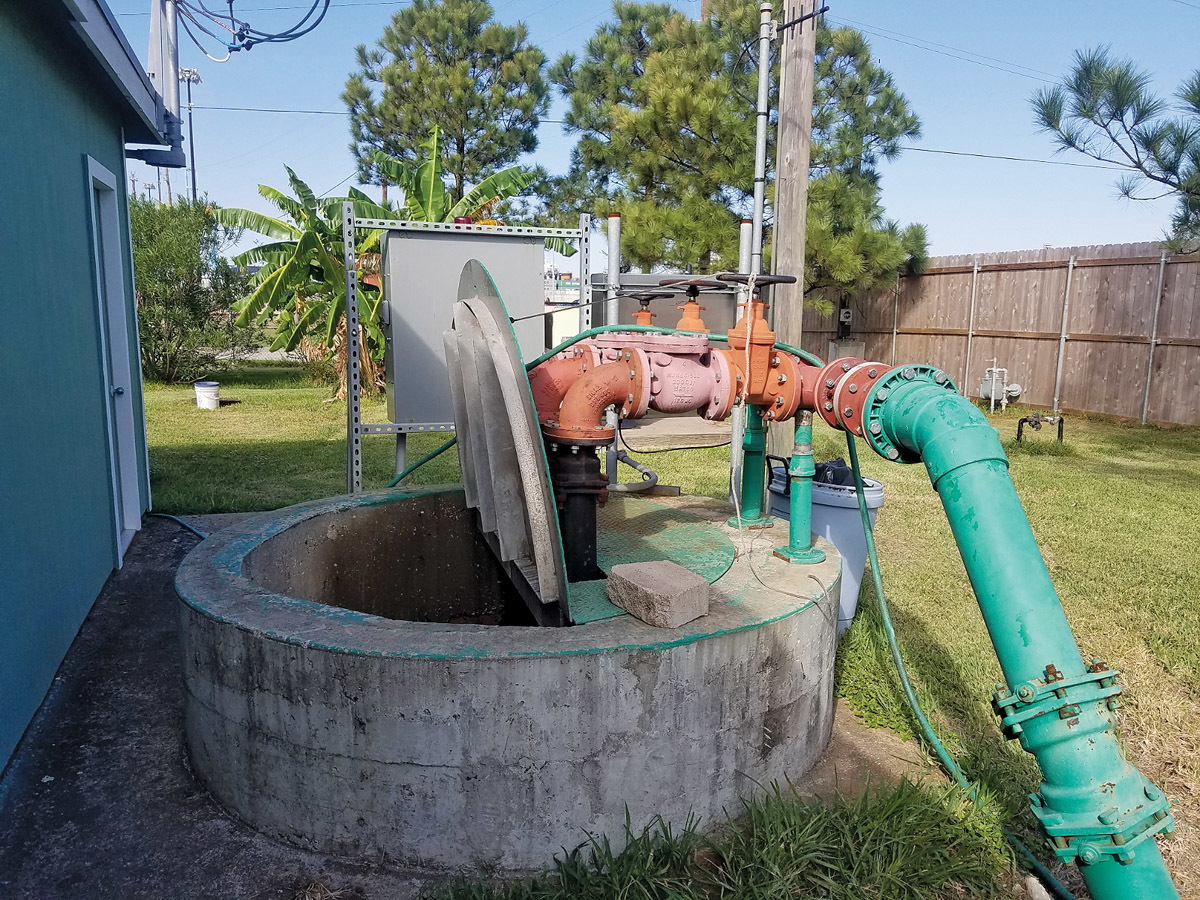
Submersible chopper pump stands strong through tropical storm
Problem:
The main lift station serving the wastewater treatment plant in Morgan’s Point, Texas, had problems with three standard nonclog pumps that frequently clogged with shop rags and other debris after heavy rains. Over seven years, those issues cost $100,000 for pump maintenance and service.
Solution:
The city installed a Vaughan SE-Series submersible chopper pump and a complete guiderail system.
Result:
The city received more than 100 inches of rain with no plugging or other issues. During Hurricane Harvey in 2017, the pumps ran continuously for 72 hours without incident, while pumping over 2.5 million gallons of sewage through the lift station. It never flooded and none of the 150 homes served experienced sewer backups. 888-249-2467; www.chopperpumps.com.
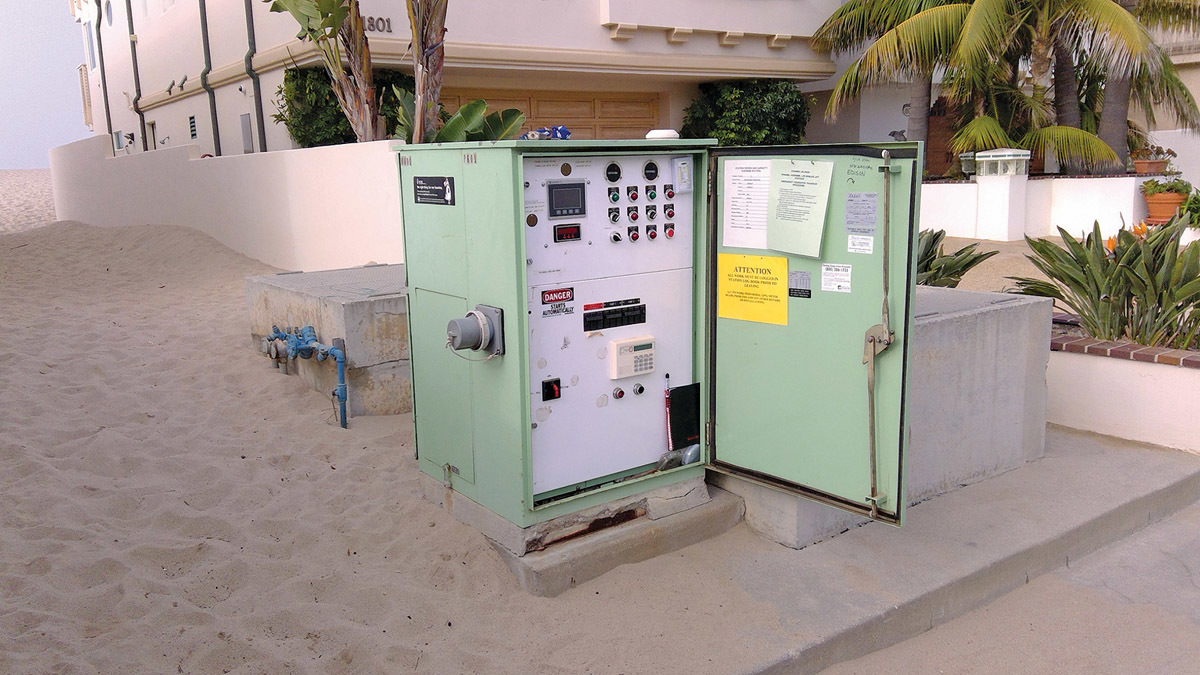
Remote monitoring and control reduces false alarms
Problem:
False alarms from lift station pumps required frequent evening and weekend operator attention at a California community services district. Seven lift stations had aging instrumentation comprised of auto-dialers with traditional SCADA, which required operators to respond in person to each alarm. Operators needed a reliable way to monitor wet well levels and pumps remotely to address alarms efficiently and act when needed to avoid overflows.
Solution:
The district installed XiO’s Lift Station Control System throughout the collections system. The cloud-based system allows operators to view statuses on sensors and pumps, as well as wet well levels, from any web-enabled device. They can receive alarms and control equipment, such as turning pumps on and off, via smartphones, greatly reducing the time required to respond to alarms.
Result:
The system immediately reduced false alarms. Data collected gave operators insights to the health of the pumps, enabling a proactive maintenance schedule. 877-946-0101; www.xiowatersystems.com.
